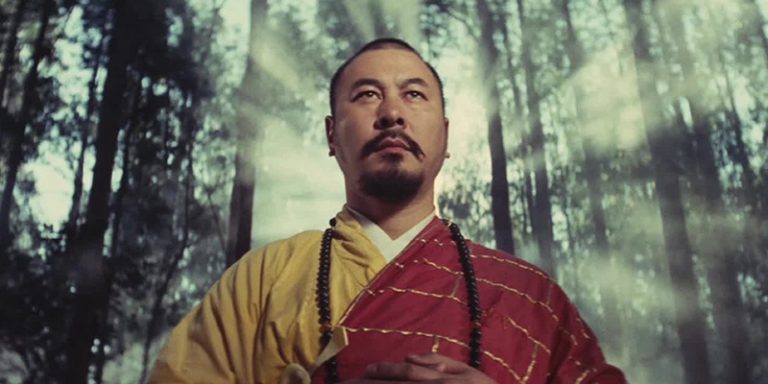Teaching together with Sebastian Lütgert and Jan Geber in WS2019/20 at HFK.
BRIEF
The Chinese culture of the “Martial Arts” is today inseparable from its (moving) image, one which has long reach. This project seeks to break down the Martial Arts through the breakdown of its image, in the hope of re-purposing it for our troubled times.

CONTEXT
Wuxia (武俠) literally means "martial heroes", and concerns a genre of Chinese fiction concerning the adventures of martial artists in ancient China. Although wuxia is traditionally a form of fantasy literature, its popularity has caused it to spread to diverse art forms such as Chinese opera, comics, films, television series and video games. It forms part of popular culture in many Chinese-speaking communities around the world.
The word "wǔxiá" is a compound composed of the elements wǔ (武, literally "martial", "military", or "armed") and xiá (俠, literally "chivalrous", "vigilante" or "hero"). A martial artist who follows the code of xia is often referred to as a xiákè (俠客, literally "follower of xia") or yóuxiá (遊俠, literally "wandering xia"). In some translations, the martial artist is referred to as a "swordsman" or "swordswoman" even though he or she may not necessarily wield a sword.
The heroes in wuxia fiction typically do not serve a lord, wield military power, or belong to the aristocratic class. They often originate from the lower social classes of ancient Chinese society. A code of chivalry usually requires wuxia heroes to right and redress wrongs, fight for righteousness, remove oppressors, and bring retribution for past misdeeds. Chinese xia traditions can be compared to martial codes from other cultures such as the Japanese samurai bushidō.
AIMS
The workshop will form the first part of the my ongoing research into a project about the Martial Arts, or Wuxia. My interest is the genre is long lasting and deep. My earliest memories of moving images were inextricably coupled and entwined with that of human bodies moving ballistically across the screen.
My first consciousness of class oppression and my innate distrust of authority probably also resulted from my continuous intake of Martial Arts movies. But so did my awareness of contradicton and treachery (both at the class and individual levels). For every Martial Arts film in which the hero is a lone wolf operating outside of social codes, there was bound to be another movie in which the “hero” is an agent of the State. Sometimes such a State Martial Artist might even be a Monk – typically one from “Shaolin Temple”. The myth of Shaolin as the Temple of the martial arts probably began as a gathering of so-called pugilists by the temple for the purpose of extracting rent on the peasants around them. One could assume that in their fold, were many violent criminals who sought to escape the law through “monk-hood”. The reputation of Shaolin was further enhanced by their (violent) service to a few Emperors. This alliance between the great Asian spiritual and philosophical system of Buddhism and (right wing) violence is not shocking. We see it today in Buddhist-Nationalism in various Asian states. But we have also seen it in the close historical relationship between Zen and the “Samurai spirit” in Japan, that ultimately led to various influential Zen monks to supporting Japanese militarism in the first half of the 20th Century.
But there have always been, and will always be other possibilities in the Martial Arts that we will seek to uncover in this workshop, which will consists of
i) readings and discussions of certain texts (historical-critical analysis of the tradition of Wuxia ) alongside certain “East Asian” philosophical texts related to Taoism and Zen Buddhism
ii) Viewings and detailed asethetic and political analyses of Wuxia films – looking not only at their ideological structures, but also their technical innovations in “movement” and “time”
iii) An exercise in categorizing and classifying Wuxia film footage (to be discussed)
iv) Discussions about the creation of an algorithmic “critical” archive of Martial Arts
Biography
Ho Tzu Nyen (*1976 in Singapur, lebt und arbeitet dort) arbeitet in den Medien Film, Video, Performance und Theater.
Ho Tzu Nyen verwebt in seinen Arbeiten zahllose Bezüge aus Kulturgeschichte und Philosophie zu beeindruckenden Bildwelten, die formal durch Barock, Tableau vivant (Lebendes Bild) und Popkultur inspiriert sind. Sein zentrales Thema ist die vielschichtige Kommunikation zwischen westlicher und östlicher Kultur, wie sie sich in den komplexen Identitäten Südostasiens widerspiegelt. Kolonialgeschichte, Mythen und kulturelle Symbole verbinden sich in seinen großformatigen Installationen zu einem einzigartigen Oeuvre.
Er hat Bildende Kunst am Victorian College of the Arts in Melbourne und Southeast Asian Studies an der National University of Singapore studiert. Einzelausstellungen u.a.: Substation Gallery, Singapore (2003); Contemporary Art Centre of South Australia, Adelaide (2010); Artspace, Sydney (2011); Mori Art Museum, Tokyo (2012); Asia Art Archive, Hong Kong (2017); McaM, Shanghai (2018); TPAM, Yokohama (2018). 2011 hat Ho Singapur auf der 54. Venedig Biennale repräsentiert. Er hat an zahlreichen internationalen Filmfestivals teilgenommen, z.B. 41. Directors’ Fortnight des Cannes International Film Festival (2009), 66th Venice International Film Festival (2009); Sundance Film Festival (2012). Gruppenausstellungen (Auswahl): Singapore Biennial (2006); Video Killed the Painting Star, Contemporary Center of Art, Glasgow (2007); Thermocline of Art: New Asian Waves, ZKM Center for Art and Media, Karlsruhe (2007); Asia Pacific Triennial, Queensland Art Gallery, Brisbane (2009); No Soul for Sale, Tate Modern, London (2010); transmediale.11, Haus der Kulturen der Welt, Berlin (2011); Surplus Authors, Witte de With, Rotterdam (2012); Autonomous Zones, Times Museum, Guangzhou, China (2013) und Social Factory, 10. Shanghai Biennale (2014); Guggenheim, Bilbao (2015); Guggenheim, New York (2016); QAGOMA, Brisbane (2016); Haus der Kulturen der Welt, Berlin (2017); Dhaka Art Summit, Dhaka (2018); Gwangju Biennale, Gwangju (2018); National Gallery, Singapore (2018); Sharjah Biennial 14 (2019). Im Januar 2015 erhielt er den Grand Prize Award des Asia Pacific Breweries Foundation Signature Art Prize.